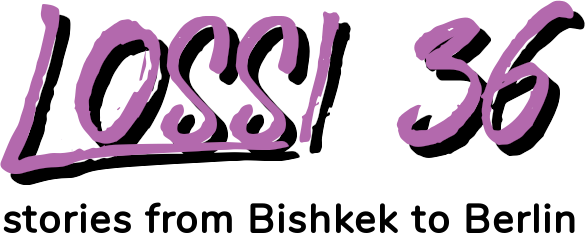A Queer Icon: reviewing The Great Nijinsky by Lynn Curlee5 min read
The Great Nijinsky is a tragic tale of one of the greatest dancers of the early 20th century. Vaslav Nijinsky was a Polish dancer and choreographer whose works and legacy far overshadow his short and troubling life. In this new biography by Lynn Curlee, photographs, diary entries, and original artworks illuminate the beautiful story of passion, identity, and mental illness in Nijinsky’s life.
Nijinsky was born in 1889 to two Polish dancers in a traveling opera. Nijinsky’s talents were recognized at a young age while he trained at the Imperial Ballet School in St. Petersburg. Upon graduation, he joined the imperial dance company and was immediately given major roles in the most prominent shows. Nijinsky earned the attention of Sergei Diaghilev, self-proclaimed patron of the arts. Diaghilev founded the magazine World of Art, was known for his numerous social connections, and actively promoted Russian arts to international audiences.
“Self-confident and larger-than-life, the worldly older man took complete charge” of Nijinsky’s career. Diaghilev created the Ballet Russes company with pioneers in the arts: Alexandre Benois in ballet conceptualization; Leon Bakst in costume and set design; and of course Nijinsky as the brightest star and principal dancer. Nijinsky also tried his hand at choreography in The Rite of Spring, Jeux, and The Afternoon of a Faun, though they were all too radical for the time and not received well by audiences.
The book highlights some of Nijinsky’s more private struggles, such as his obsessive guilt over masturbation. Nijinsky was also very awkward, seemingly detached and nervous, with a history of mental illness within his family. His marriage to dance groupie Romola de Pulszky was unexpected and plunged him into depression. He was sent to live in various asylums, often on the selfish whims of his wife. While institutionalized, he received a total of 228 shock insulin treatments, which inevitably damaged his brain, heart and kidneys. Nijinsky narrowly escaped death numerous times – he avoided being drafted into the Russian army for World War I and later, avoided being rounded up as the Third Reich’s “Final Solution” of the mentally ill in World War II.
Although he was unwell for more than thirty years, Curlee focuses on his earlier life and his artistic achievements, in a way that is sensitive and acknowledges the changing understanding of mental health and sexual identity.
Moments too perfect for video
There are a few particular vignettes that Curlee does an especially artful job of recreating for the reader. Curlee writes about Nijinsky in Lido Beach in Venice for a “kind of honeymoon” at the beginning of his relationship with Diaghilev, describing Nijinsky “in a short scarlet bathing costume, without the usual tank top worn by men, this dancer’s muscles rippling… gentlemen simply did not appear bare-chested or show their naked thighs… but Vaslav Nijinsky was no ordinary gentleman.” Curlee paints the picture of an absolute icon.
In the chapter titled, Petrushka, Curlee describes in detail Nijinsky’s third role with Ballet Russes in 1911. Petrushka, now considered a cornerstone work of twentieth-century music, is a story of a puppet caught in a love triangle. He describes Nijinsky’s performance on stage as a puppet: “he kept his face expressionless and blank, with his eyes like black buttons, quizzical eyebrows painted high on his forehead.” With such lush visuals, it is a shame that Diaghilev did not allow his shows to be filmed.
A bisexual enigma
Nijinsky was more than a dancer and choreographer – he was an actor. He would inhibit a role completely, “becoming the character rather than just playing a part.” In an era where motion video was at its infancy, dance was a powerful art that united people for centuries.
There may be other dancers, but a talent like Nijinsky’s is rare. “Nijinsky radiated an unprecedented sexual magnetism onstage and may be regarded as one of the first real male sex symbols, with his innate physical ability to penetrate the subconscous of the audience and stir their most basic emotions using only his body” writes Curlee. With insight into Nijinsky’s mental state, I can’t help but wonder if he had gotten the help he needed, would he have had a more fulfilling career? Knowing that Nijinsky was vulnerable, shy, and awkward, activates a maternal instinct in me and desire to protect budding queer artists with radical ideas like him.
A beautiful keepsake
Reading The Great Nijinsky: God of Dance is not unlike being immersed in a dazzling Ballet Russes performance. From the gold embossed romantic lettering, to the deep blue embellishments that evoke a dreamy night sky, to the hyper-contrasted reproduction of the chiseled god-like Nijinsky in an evocative pose, clothed in an eye-catching avante-garde costume fit only for a king – the mere cover of this book is clearly a stunning work of art, meant to be admired, and enjoyed physically, rather than in digital form.
The pages do not disappoint either. The stunning typography, kerning, stylized storybook lettering add to the overall atmosphere of the reading experience. Each chapter begins with an original hyper-realistic portrait of Nijinsky, a tasteful and modern reproduction of one of the few photos that still exist of this enigmatic dancer in costume. A decorative playbill accompanies the beginning of each chapter, formatted in such a way that mirrors the buzz that high society papers were probably printing about each of his show openings at the time. Everything about this book is the artistry of Lynn Curlee, a triple-threat not unlike the great Nijinsky himself. Curlee is a prolific children’s book author, illustrator, painter, and gallery owner in New York. His fascination with Nijinsky began at a young age and it is fitting that someone with such an eye for design and precision preserve Nijinsky’s story.
Book details: Curlee, Lynn. The Great Nijinsky. Penguin Random House, 2019. It is available to buy here.





